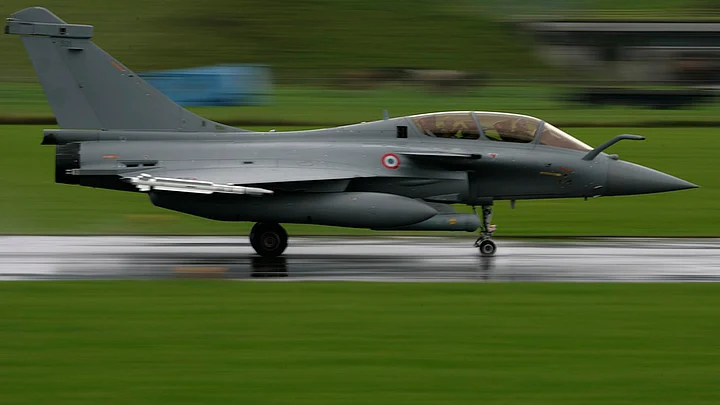The Ministry of Defence has cleared a new policy that looks to boost private participation in the sector, but the first contract may not be awarded till 2019.
The Defence Acquisition Policy, which will now go to the Cabinet Committee on Security headed by Prime Minister Narendra Modi, has four strategic segments – single engine fighter aircraft, helicopters, submarines and armoured fight vehicles/main battle tanks. Each segment will have one strategic partner and one original equipment maker (OEM).
It will take about a year to identify a strategic partner and the government will go for competitive bidding, said Bhaskar Kanungo, senior consultant at the Andhra Pradesh Economic Development Board (APEDB), who is advising the state on getting defence investments.
An actual contract can be expected in a year and a half from now. So either it will be late 2018 or mid-2019 – that is post the election when the new government takes charge.
The Modi government is making efforts to boost homegrown defence manufacturing to cut reliance on imports by the world’s largest buyer of arms. From fighter aircraft to submarines, India is looking to replace the existing stock of defence equipment. The government recently awarded a Rs 4,500-crore contract for artillery guns to Larsen and Toubro Ltd and in 2016, it cleared the purchase of 36 Rafale multi-role fighters from France’s Dassault Aviation for more than $8.5 billion.
The Defence Acquisition Policy was cleared by the Defence Acquisition Council (DAC), an arm of the Ministry of Defence. DAC is the highest decision-making body headed by the defence minister, and comprises officials from the armed forces, besides secretaries of defence, defence production and defence R&D.
Strategic Partnership
The Strategic Partnership model was proposed by a committee led by former Home Secretary Dhirendra Singh in 2015. The panel had said that to ensure that ‘Make in India’ succeeds in defence, the government should consider the model that proposed one private sector company, or a strategic partner, developing a specified platform.
A task force headed by VK Aatre, former chief of the Defence Research and Development Organisation, laid down the criteria for selecting strategic partners. This was followed by recommendations by five panels including industry representatives, and the defence ministry finally came up with the final norms.
A strategic partner would be a ‘system of systems’ integrator, who would set up an ecosystem of development partners, specialised vendors and suppliers, especially those from the micro, small and medium enterprises, according to a presentation made the defence ministry to industry bodies like CII, FICCI, Assocham and private sector players on 11 May.
The government wants to restrict it (defense manufacturing) to only genuine people. Now, how to evaluate those genuine people is an exercise. Whether three genuine people are a better bet than 10 genuine people is a strategy they would have to decide.SN Roy, Whole-Time Director And Head of Power, Heavy Engineering And Nuclear division, L&T
The defence ministry will shortlist strategic partners and original equipment manufacturers through separate processes. Once shortlisted, the ministry will follow the selection criteria laid down by the Aatre Task Force.
At the first stage, selection would focus on minimum qualification criteria which would include financial, technical and other factors.
Consolidated turnover of the company for the preceding three financial years should be at least Rs 4,000 crore, with capital assets of over Rs 2,000 crore at the end of last available financial year, according to a presentation made to industry by the defence ministry.
The debt-to-earnings before interest, tax, depreciation and amortisation should not exceed 3 for the strategic partner, which should also have a long-term issuer credit rating of ‘A’. In addition, the government will also consider whether the company has been classified as a wilful defaulter, if it has undergone debt restructuring, or whether its assets have been classified as non-performing assets.
The government should look into the financials of the strategic partners “with microscope”, said SN Roy, Whole-Time director and head of power, heavy engineering and nuclear division at L&T.
They should have conditions so that these partnerships work and lead to self-sufficiency within the Indian environment. So that these partners do not have to depend on foreign partners. The financials have to be very carefully looked into, and players should not have gone through a corporate debt restructuring mechanism, and those are a few.SN Roy, Whole-Time Director And Head Of Power, Heavy Engineering and Nuclear Division, Larsen and Toubro
Based on these criteria, the government will select two companies to participate in competitive bidding and will also concurrently select the OEM, said Kanungo.
The government intends to carry out subsequent acquisitions in the four segments selected through Indian companies, and this would require long-term investments in capacity creation and capabilities, the defence ministry presentation said.
(This story was originally published on BloombergQuint)
(At The Quint, we question everything. Play an active role in shaping our journalism by becoming a member today.)
